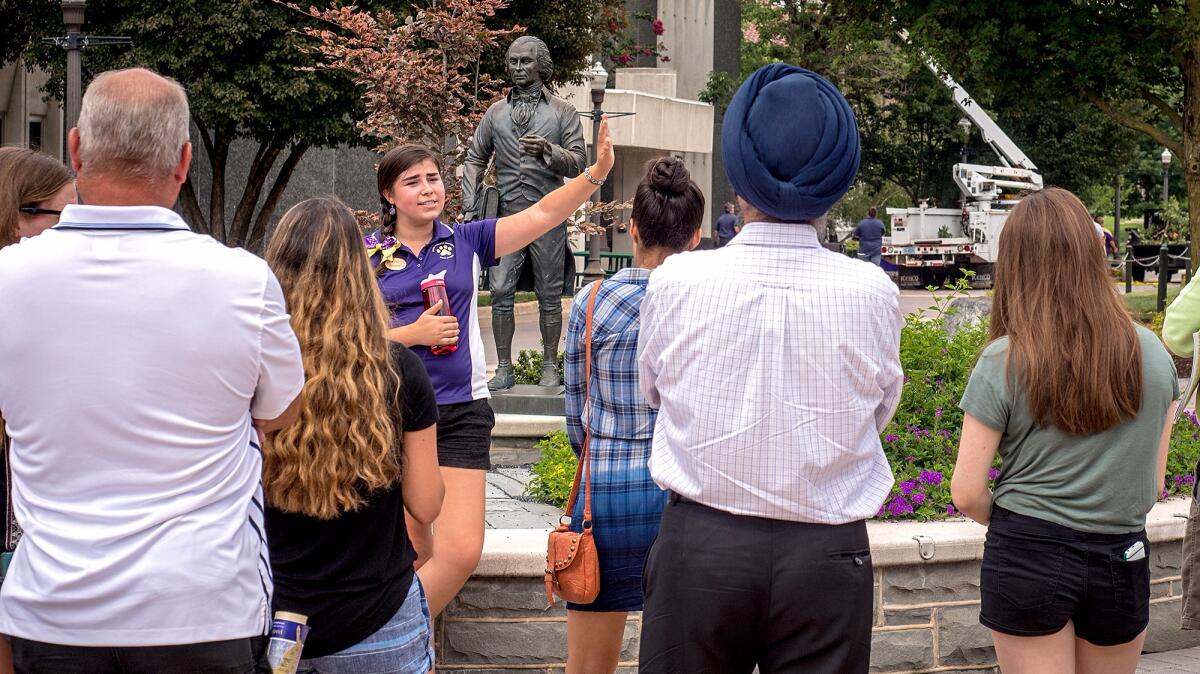Column: When it comes to campus groupthink, trigger warnings aren’t the half of it

- Share via
To people like me — that is, proponents of free expression exasperated by the ideological bullying we see in collegiate life today — trigger warnings are catnip. The absurdity of it all, we cry! The spinelessness of faculty and administrators! The shameless pandering to the gossamer sensibilities of coddled, overgrown urchins! (That’s coddled™, by the way, because I’m fairly certain the word is no longer used for anything other than complaining about youngsters.)
So when news got out last week that the University of Chicago sent a letter to incoming freshmen stating that the school did not support “so-called trigger warnings,” I was among those cheering the return to academic non-wussiness. After all, if I had to get through Ovid’s “Metamorphoses,” with its depictions of rape and kidnapping, not to mention the harrowing dactylic hexameter, shouldn’t everyone have to?
The biggest threat to the future of liberal education ... is that liberal is starting to mean its opposite.
In theory, yes. But the truth is I never read “Metamorphoses,” partly because I was too triggered by its rhythmic rules to actually take a course in classical Roman poetry. One thing I did learn in college, though, is the importance of intellectual integrity and open debate. And that is why, as much as it pains me to say it, I’m beginning to wonder if those of us who rail against trigger warnings are missing the bigger picture.
On the heels of the University of Chicago letter came a widely circulated essay on the website Medium by a social psychology professor arguing in favor of “small advisories” for students. The professor posed a simple question: What’s wrong with just asking students ahead of time if there are subject areas that might keep them from fully absorbing a lesson and, if so, giving them a heads up? When used effectively, the essay argued, trigger warnings aren’t about censorship or excusing students from doing the work but, rather, helping them process the material in ways that work best for them.
That sounds reasonable enough, but it’s unlikely to get critics of campus identity politics to stop raving about trigger warnings. That’s because the term has become a stand-in for the much larger phenomenon of leftist groupthink masquerading as liberalism. Just as Columbia University student Emma Sulkowicz’s mattress became the symbol of campus anti-rape activism, “trigger warning” is now shorthand for a wide constellation of student concerns and demands. But given what minor intrusions these advisories can be, at least in the big scheme of things, maybe they don’t adequately capture the scope of the problem.
I’ll say it again: I’m opposed to trigger warnings on principle. But to my mind, they’re not nearly as troubling as the way some college students (a minority but a very vocal one) shut down important debate and discussion because the mere thought of it is somehow threatening. On many campuses, especially liberal arts colleges and especially in the humanities, conversations about provocative or sensitive topics appear to unfold less like conversations than recitations from a handbook — one that must be memorized and adhered to under threat of expulsion from polite campus society.
According to the handbook, campus speakers whose views diverge even slightly from those of the loudest campus activists deserve to be shouted down or dis-invited under the pretense that students do not feel “safe” in their presence. (For the record, the University of Chicago also made it clear that it would not cancel invited speakers “because their topics might prove controversial.”)
According to the handbook, administrators have to answer student demands ranging from renaming buildings to eliminating Shakespeare requirements to creating segregated safe spaces for students of many “marginalized” groups.
According to the handbook, what doesn’t require protest is that self-identified liberal or even far left professors outnumber self-identified conservative faculty members five to one.
Apparently the American college campus, though probably more progressive and demographically inclusive than at any time in history, is really a bulwark of sexism, transphobia, post-colonial bigotry and just about any other social injustice you can think of.
Yikes. Merely laying out those examples triggered me. Any one of them strikes me as far more troubling than an instructor warning a class that “The Rape of Persephone” contains rape scenes. That’s why those of us who’ve been ranting about the extremism of campus activism might need to choose our battles and stop making the trigger warning our target. It’s easy to make fun of, but it’s not the biggest threat to the future of liberal education. The biggest threat is that liberal is starting to mean its opposite. The warning signs are everywhere.
Twitter: @meghan_daum
Follow the Opinion section on Twitter @latimesopinion and Facebook
More to Read
A cure for the common opinion
Get thought-provoking perspectives with our weekly newsletter.
You may occasionally receive promotional content from the Los Angeles Times.







